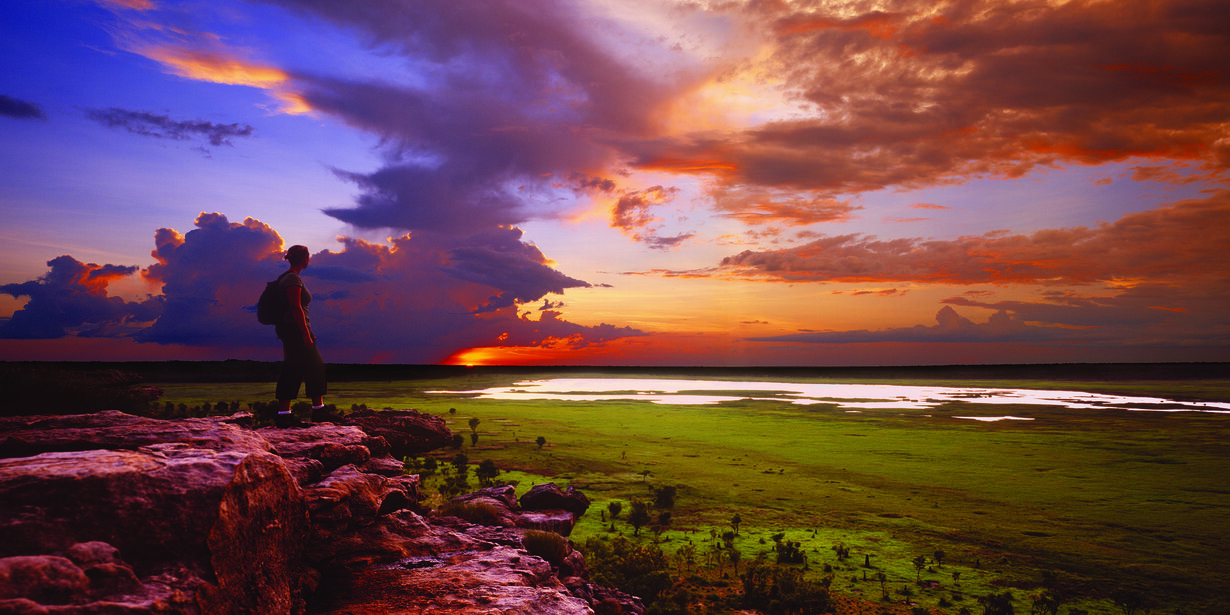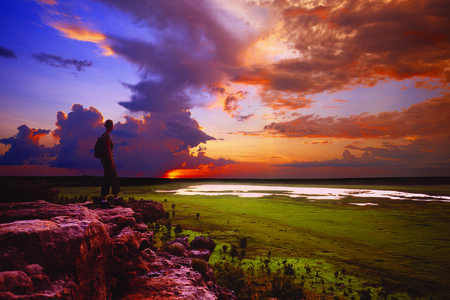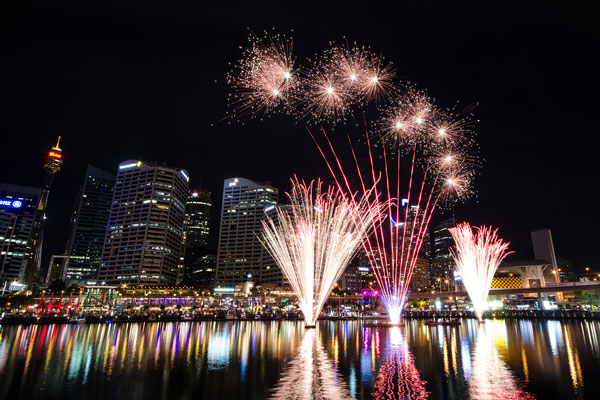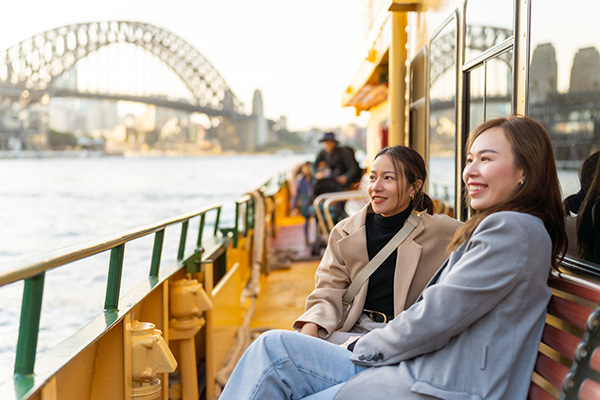Locals love Darwin’s wet season for its lack of crowds, excellent fishing and enhanced natural splendour. It’s hot, sure, but if you can get past that you’re in for a real treat. Here are five of the best things you’ll only see during the city’s tropical summer.
1. Magnificent storms
Darwin is the storm capital of Australia, clocking more lightning strikes than anywhere else in the country, which makes for some Instaworthy holiday snaps. The first few months of the wet season - which runs from November to April - are known as the build-up, thanks to climbing temperatures and rising humidity. These conditions create regular afternoon storms, legendary for both the speed with which they move, and the spectacular light shows they put on. Do as the locals do and pull up a seat at one of the cafes along the waterfront, watching the dark clouds roll in and the sky light up. It’s one of Mother Nature’s best free shows.
2. Australia’s most colourful grasshopper
It might seem strange to have a creepy crawly on the list but it’s not every day you see an animal with colours this vivid. Leichhardt’s grasshoppers turn bright red, blue and orange once they reach maturity; something that happens at the start of wet season every year. The timing of their maturity coincides with peak storm season in the region, a phenomenon which led the Jawoyn and Gundjeibmi people of Western Arnhem Land to call the grasshoppers Alyurr, children of the lightning man Namarrgon. You can see them in all their technicolour glory at various sites in Kakadu National Park.
3. Multi-hued sunsets
While dry season sunsets are also pretty, sunsets during the wet are spectacular thanks to the colour-catching ability of clouds. Expect oranges, reds and pinks to stretch across the sky and intensify as the sun sinks lower into the ocean. Some of the best spots to take in the show are the Darwin Ski Club, Mindil Beach and Stokes Hill Wharf.
4. Thundering waterfalls
Heavy rains mean the waterfalls in Kakadu and Litchfield National Parks are at their most impressive during the wet season, particularly from December onwards. One of the best ways to see them and get an appreciation for their size and power is by stepping aboard a scenic flight. Wildlife is also in abundance during the wet season, meaning you’re much more likely to see a croc and an array of birdlife, with one third of Australia’s species found in Kakadu alone.
Kakadu’s traditional owners recognise six different seasons, according to changes in the weather and when plants flower. Each season has its own appeal, but Kudjewk, the monsoon season from December to March, is particularly special. That’s when thunderstorms and heavy rain cause an explosion of plants and animals. You’re much more likely to see a croc and an array of birdlife during the wet, with one third of Australia’s species found in Kakadu.
5. Biting barramundi
Keen anglers flock to Darwin’s estuaries throughout the wet season to hook themselves one of the Territory’s most coveted fish: barramundi. Barra start breeding in October every year, venturing out of their winter habitats and congregating in large groups. Higher water levels mean they also move more freely throughout inland waterways, providing plenty of opportunities for a catch. Given the average length of a NT barra is between 0.6 and 1.2 metres, it’s safe to say a catch justifies both an impressive feast and long-term bragging rights.
Stay Cool and Sleep Well
Stay cool and dry with a Waterfront Staycation at Vibe Hotel Darwin Waterfront or Adina Apartment Hotel Darwin Waterfront, complete with buffet breakfast for two, $75 dining credit, 12pm late check-out, complimentary high-speed Wi-Fi and free parking for one vehicle. eClub members also receive an exclusive additional discount.
** Peace of mind when you stay with us: Introducing Clean Touch. Note some activities listed may be subject to Covid restrictions. *










